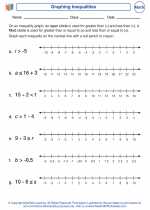Determining Sample Size in Statistics
When conducting a statistical study, it is important to determine the sample size, which is the number of individuals or observations to be included in the study. The sample size plays a crucial role in the accuracy and reliability of the study's results. In order to determine an appropriate sample size, several factors need to be considered.
Factors to Consider
- Population Size: The size of the population being studied can influence the sample size. A larger population typically requires a larger sample size to accurately represent the entire population.
- Confidence Level: The confidence level indicates the level of certainty that the sample accurately represents the population. Common confidence levels include 90%, 95%, and 99%.
- Margin of Error: The margin of error is the range within which the true population parameter is estimated to lie with a certain level of confidence. A smaller margin of error requires a larger sample size.
- Variability: The variability or dispersion of the data within the population can impact the required sample size. More variability often necessitates a larger sample size.
Formula for Sample Size Calculation
One of the commonly used formulas for determining sample size is the following:
Sample Size (n) = (Zα/22 * (p * (1 - p))) / E2
- Zα/2: The z-score corresponding to the desired confidence level. It is derived from the standard normal distribution and represents the level of certainty.
- p: The estimated proportion or probability of success in the population.
- E: The margin of error, which is the maximum likely difference between the true population parameter and the sample estimate.
Example
Suppose a researcher wants to determine the sample size for a study with a confidence level of 95%, a margin of error of 5%, and an estimated proportion of success in the population of 0.50. Using the formula, the sample size calculation would be:
Sample Size (n) = (Zα/22 * (p * (1 - p))) / E2
= (1.962 * (0.50 * (1 - 0.50))) / 0.052
= (3.8416 * 0.25) / 0.0025
= 0.9604 / 0.0025
= 384.16
After rounding up, the calculated sample size is 385.
Conclusion
Determining an appropriate sample size is crucial for obtaining reliable and accurate results in statistical studies. By considering factors such as population size, confidence level, margin of error, and variability, researchers can use the sample size formula to calculate the number of observations needed for their study.
Remember, the calculated sample size serves as a guide, and in some cases, practical considerations may lead to adjustments in the final sample size.
.◂Math Worksheets and Study Guides Seventh Grade. Equations and Inequalities

 Worksheet/Answer key
Worksheet/Answer key
 Worksheet/Answer key
Worksheet/Answer key
 Worksheet/Answer key
Worksheet/Answer key
 Worksheet/Answer key
Worksheet/Answer key
 Worksheet/Answer key
Worksheet/Answer key
 Worksheet/Answer key
Worksheet/Answer key
